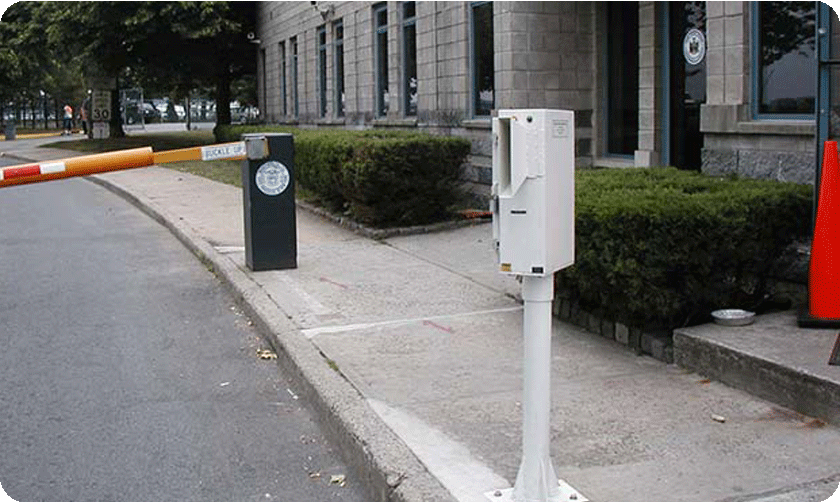Case Study at SUNY Maritime College
SUNY Maritime has used BAi Readers and Decals since 2002

A barcode reader helps guards secure the SUNY Maritime entrance. The 55-acre, waterfront campus has a spectacular view of the Manhattan skyline and the Long Island Sound, which extends to the Atlantic Ocean. Originally it was the site of Fort Schuyler, a massive stone-faced defense structure built in 1836. In 1874, SUNY Maritime College was established at the site, as the first New York Nautical School, aboard a second-hand sloop with 26 students aboard.
Today, the academic center occupies the entire peninsula with more than 1,500 cadets receiving nautical instructions in a setting of modern dining halls, residence halls, lecture halls, recreational and athletic facilities, and science and engineering laboratories. At pier-side, cadets can get hands-on experience on the Training Vessel Empire State VI, a 17,000 ton, 565-foot training ship that sails around the world during summer. Graduates move on to government, military, and private industry careers.
Ensuring safety at the college campus is the prime duty for the university police. Although the college population is less than Emory’s and parking is not an issue, the regimental campus maintains a high level of security control. During the 9/11 attack, students at SUNY Maritime College reportedly witnessed the unfolding events from shore. Later, the institute became homeport for a study by the New York Strategic Center for Port Security aimed against maritime terrorism. They offer a graduate degree in homeland security to prepare graduates as private security advisors.
The campus entry has a guardhouse and barcode reader authorization operating the gate. The perimeters are clearly defined for visitors who must check in with the guards. Once authorized, identified personnel with barcode decals attached on a car window can move through without stopping.
“There is only one way in and out and that is through the guardhouse checkpoint. The reader frees up the guards so they can check visitor and delivery IDs and assign day passes. The unit operates day and night, in hot or cold, without failing.”
Lt. Myron Pyrmak, Security Director
Access control specialist Jack Koff of Eastco Manufacturing Co., in Pelham, N.Y., says when SUNY Maritime College first met with him, he knew they were not a cookie-cutter installation. He considered customization, cost, long-term durability, reliability of working mechanical components, integrating components with existing systems and record retrieval. He then decided to introduce the concept of barcode readers and they liked it.
“The barcode decals with Maritime’s logo make it easy for staff to detect people who aren’t authorized to be in the area. The system has been in place for nearly three years and, so far, operating expenses have been minimal. They are happy with the reader’s top performance.”
Jack Koff, Access Control Specialist